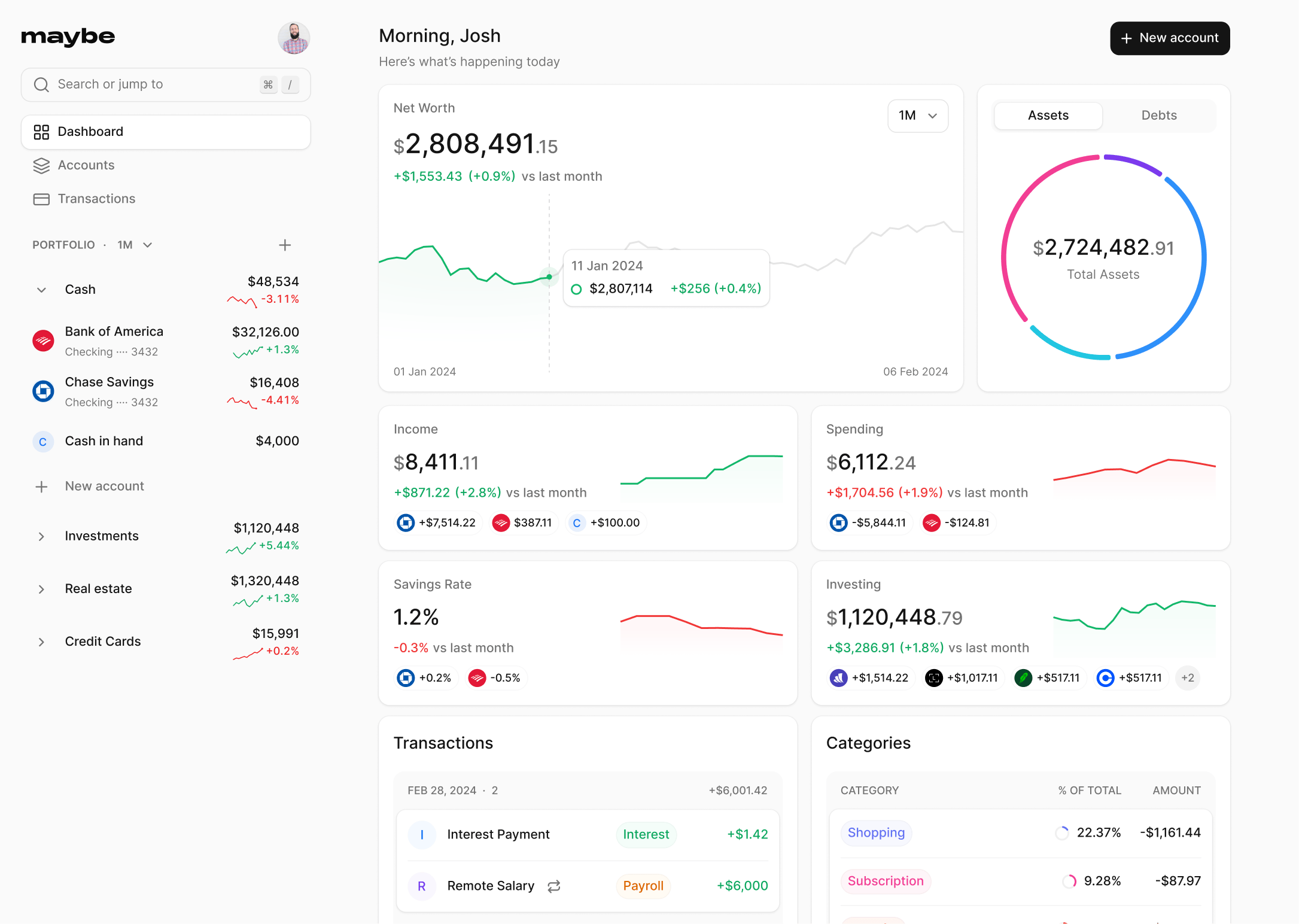Understanding Asset Allocation Funds: A Comprehensive Guide

Author
Josh Pigford
In today's volatile financial markets, the intelligent allocation of assets can be the difference between mediocre and stellar investment performance. Central to this strategy is the asset allocation fund, a vehicle designed to streamline the diversification process across various asset classes, such as stocks, bonds, and cash. For investors looking to optimize their portfolio's risk and return profile, understanding what is an asset allocation fund becomes imperative. These funds stand out as a cornerstone for those aiming to blend growth with risk management seamlessly, navigating the complexities of modern investment environments with a balanced approach.
This comprehensive guide will delve into the essentials of asset allocation funds, distinguishing them from balanced funds, providing illustrations through allocation of funds examples, and exploring multi asset allocation funds. Further, it will demystify how these funds compare against pure equity or stock investments, offering insights into choosing the right asset allocation fund to meet individual financial goals. Through exploring the benefits of asset allocation funds, readers will gain a thorough understanding, empowering them to make informed decisions in constructing a diversified, resilient investment portfolio.
Types of Asset Allocation Funds
Balanced Funds
Balanced funds, a prevalent type of asset allocation fund, typically maintain a fixed ratio of stocks to bonds, such as 60% stocks and 40% bonds. This mix aims to strike a balance between growth through equities and income through bonds, appealing to investors seeking moderate growth with controlled risk. The equity portion often includes large-cap stocks, potentially featuring companies from major indices like the S&P 500, while the bond component may consist of high-grade bonds like AAA corporate debt and U.S. Treasuries. These elements together provide a dual benefit of potential capital appreciation and income generation, making balanced funds suitable for investors with a moderate risk tolerance, such as retirees.
Target-Date Funds
Target-date funds are designed to simplify retirement planning. These funds automatically adjust their asset allocation, decreasing the proportion of riskier assets like stocks and increasing safer assets like bonds as the target retirement date approaches. This built-in adjustment mechanism, known as a glide path, helps manage risk over time, making target-date funds an attractive option for those who prefer a hands-off investment approach. Investors select a fund based on their expected retirement year, with the fund's mix becoming progressively conservative as it nears this date. This feature caters especially to those without the time or inclination to actively manage their retirement savings.
How to Choose the Right Asset Allocation Fund
Risk Tolerance
Understanding one's risk tolerance is crucial when selecting the right asset allocation fund. Risk tolerance reflects the degree of variability in investment returns that an investor is willing to withstand. This can be influenced by several factors, including financial goals, investment horizon, and personal comfort with market fluctuations. For instance, a younger investor might be more inclined towards aggressive funds due to a longer time horizon, allowing them to recover from potential market downturns. Conversely, those nearing retirement may prefer conservative funds to preserve capital.
Investment Goals
Setting clear investment goals is essential to determine the appropriate asset allocation. Goals vary from saving for retirement, purchasing a home, funding education, or building an emergency fund. Each goal requires a different investment strategy and risk level. For example, short-term goals might be better served by lower-risk investments such as bonds or money market funds, whereas long-term goals might benefit from the potentially higher returns of stocks or mixed asset funds.
Time Horizon
The investment time horizon plays a pivotal role in choosing the right asset allocation fund. It refers to the amount of time an investor expects to hold an investment before taking the money out. Long-term investors can typically afford to take on more risk because they have more time to recover from market volatility. Those with shorter horizons, due to imminent financial needs, might consider more conservative allocations to avoid the risk of significant losses in a market downturn.
By carefully considering these three critical aspects---risk tolerance, investment goals, and time horizon---investors can make informed decisions about which asset allocation fund best suits their needs, aligning their investment strategy with their financial objectives and personal circumstances.
Benefits of Asset Allocation Funds
Diversification
Asset allocation funds inherently embrace diversification, which is the strategy of spreading investments across various asset classes to mitigate risk. This approach not only helps in reducing the volatility of the portfolio but also enhances the potential for balanced growth. By including assets that are not highly correlated with one another, such as stocks, bonds, and commodities, these funds aim to provide a more stable and consistent return over time.
Professional Management
One of the significant advantages of asset allocation funds is the expertise brought by professional management. Fund managers are equipped with the skills and resources necessary to analyze market conditions and adjust the portfolio accordingly. This active management helps in navigating complex market dynamics effectively, aiming to safeguard investments while seeking optimal performance.
Regular Rebalancing
Regular rebalancing is crucial in maintaining the intended asset allocation over time, which can drift due to varying performances of different asset classes. Asset allocation funds frequently adjust their holdings to align with the original investment strategy, which helps in managing risk and capitalizing on opportunities. This disciplined approach ensures that the portfolio adheres to a predefined risk tolerance level, potentially leading to better risk-adjusted returns for investors.
FAQs
What is Asset Allocation and How Does It Work?
Asset allocation is the strategy of spreading your investments across various asset classes, such as stocks, bonds, and cash. This strategy is highly individualized and should be adjusted throughout your life to match your investment timeline and risk tolerance.
What is the Ideal Portfolio Balance for Someone Aged 80 or Older?
For individuals in their 60s, a moderate portfolio composition of 60% stocks, 35% bonds, and 5% cash or cash equivalents is suggested. Those in their 70s might opt for a more conservative allocation of 40% stocks, 50% bonds, and 10% cash. By the time one reaches 80 years old or more, a conservative balance of 20% stocks, 50% bonds, and 30% cash is recommended.
What are the Key Asset Allocation Models?
Asset allocation can generally be categorized into three primary models:
- Income Portfolio: This model focuses heavily on bonds, with an allocation of 70% to 100%.
- Balanced Portfolio: A more evenly distributed model with 40% to 60% in stocks.
- Growth Portfolio: This model leans towards stocks, with 70% to 100% of the portfolio in equities.
How Does the Rule of 110 Apply to Asset Allocation?
The rule of 110 is a straightforward guideline to help investors decide on the proportion of stocks in their portfolio. By subtracting your age from 110, you can calculate the percentage of your investments that should be allocated to stocks. For instance, at the age of 40, according to this rule, 70% of your portfolio should be in stocks.
The Ultimate Guide to Asset Allocation: Strategies for Optimal Portfolio Diversification

Josh Pigford
Maybe's Top Picks: Best Personal Money Management Software for Mac

Josh Pigford
Ask the Advisor: Invest more or pay off debt?
Travis Woods
Join the Maybe  waitlist
waitlist
Join the waitlist to get notified when a hosted version of the app is available.
